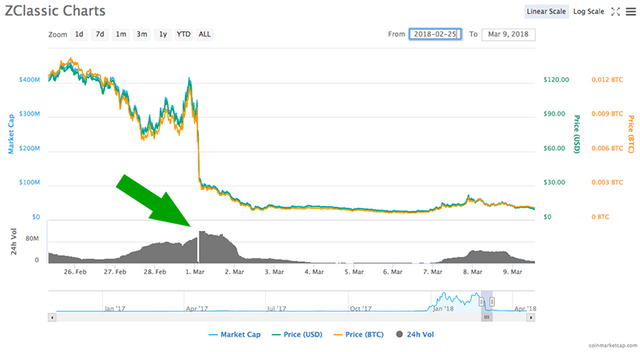What You Need to Know About Cryptocurrency Airdrops
What is a Cryptocurrency Airdrop?
In the crypto world, an airdrop is a free, often automatic distribution of cryptocurrency to a certain group of people.
In this article I’ll quickly cover why airdrops happen, how you can get in on the action and receive free crypto via airdrops, and some side effects airdrops have on the crypto marketplace.
Why Give Away Cryptocurrency?
You may wonder why anyone would give cryptocurrency away for free, and that’s a good question. Here are three reasons why airdrops are a thing:
1. Airdrops act as a reward for prior participation or early adoption in a related project.
Airdrops are often distributed through an associated network or channel. A few examples:
-Every user of the Binance cryptocurrency exchange received 500 Tron when the Tron airdrop occurred. Binance was one of the first major exchanges to list Tron.
-OMG tokens were airdropped to every Ethereum address that had a balance over .1 ETH. The OMG token is currently an asset on the Ethereum platform.
-All EOS holders with a balance of more than 100 EOS will receive an equal number of eosDAC tokens. eosDAC tokens will be
used on of the EOS platform.
2. Airdrops spread awareness about new projects and create marketing buzz.
Airdrops can put new tokens in the hands of millions of potential users. Many of those users will read about the token, learning its use and gaining brand exposure, even if users only go on to sell the coin.
This also leads to an entire community of crypto enthusiasts who try to get as much “free money” as possible by watching for and participating in airdrops.
3. Airdrops sidestep government regulation in fundraising.
In countries like the US, there is much debate about whether digital tokens are securities or not. If cryptocurrencies are treated as securities, then companies issuing crypto must follow a long list of regulations in order to raise funds by issuing digital tokens; however, distributing the tokens for free limits regulatory risk for organizations creating the tokens.
This doesn’t mean token issuers won’t raise any money. Issuers who use the airdrop method will often keep 10-20% of all created tokens, which they can sell at an exchange to pay for operating costs or salaries.
How Can I Receive Free Crypto from an Airdrop?
There are a few main ways in which you can benefit from a cryptocurrency airdrop.
Own a partnered/related cryptoasset. Many airdrops automatically send you the airdropped currency as long as you hold a certain amount of tokens at a specific time, called the snapshot.
For example, OMG tokens were airdropped if you had at least 0.1 ETH in your account at 4:36pm on July 7th, 2017. In this case, the snapshot would be a record of all ETH account balances at that exact time. If you had enough ETH at the snapshot time, you would receive the airdropped OMG tokens, even if you sold all of your ETH the next minute.
Use a partnered service such as a cryptocurrency exchange that will list the new token.
Register for the airdrop. Some airdrops simply require registration of your public address, and some coins have even been airdropped as a reward for early email list subscribers.
Scammers have created fake airdrop registration sites. Be aware, and as always, never send anyone your private keys.
Not all airdrops are the same, so make sure to read the rules and requirements for each individual airdrop. One common best practice is to have airdropped tokens sent to an account you control, not an account you have through an exchange; many exchanges may not initially support the airdropped token, meaning you wouldn’t have access to the new token until the exchange supports it.
How Can I Find Out About Airdrops?
You can find out about major upcoming events regarding crypto, including airdrops, at coinmarketcal.com, a useful cryptocurrency calendar that offers a number of search options.
Or, for more airdrop-specific info, use airdropalert.com, which lists upcoming, active, and past airdrops and currency forks.
The Unintended Consequences of Airdrops
Speculation
Whenever “free” crypto is created, either by airdrop or fork, the market takes interest. Many traders will buy up the related asset needed for the airdrop, hoping to profit from the airdropped coin, and prices tend to rise as the snapshot date comes closer.
Then, after the snapshot has been taken, many of those same traders will immediately sell the related asset (because they know they will receive the airdropped coin), crashing the related asset's price.
A picture-perfect example of this can be seen when ZClassic forked and all ZClassic holders received Bitcoin Private. Notice the price rise before the snapshot date, pause in trading during the snapshot, and subsequent sell-off of ZClassic.
Notice the trade volume levels across the bottom of the chart. You can clearly see when the snapshot took place and trading basically stopped. Shortly after, trading resumed with increased volume as speculators tried to sell their ZClassic, sending the price plummeting. Chart from coinmarketcap.com.
This in turn has caused speculation into buying the related asset early and then hoping to sell it for a profit just before the snapshot is taken.
Scams
A number of scams have arisen regarding airdrops, and one of the most common scams has been the creation of fake websites where you can “register” for the airdrop by sending in your private keys. Never, ever, ever give your private keys out, especially over the internet.
Conclusion
Airdrops are a great way to get some extra crypto and diversify your investments, but be careful about chasing after assets solely because you expect them to give you an airdropped coin; there is no guarantee on the value of either coin after the airdrop happens.
Instead, you may want to consider investing a portion of your cryptocurrency portfolio into cryptos that are more likely to experience airdrops, such as platforms like Ethereum, Neo, EOS, etc.

